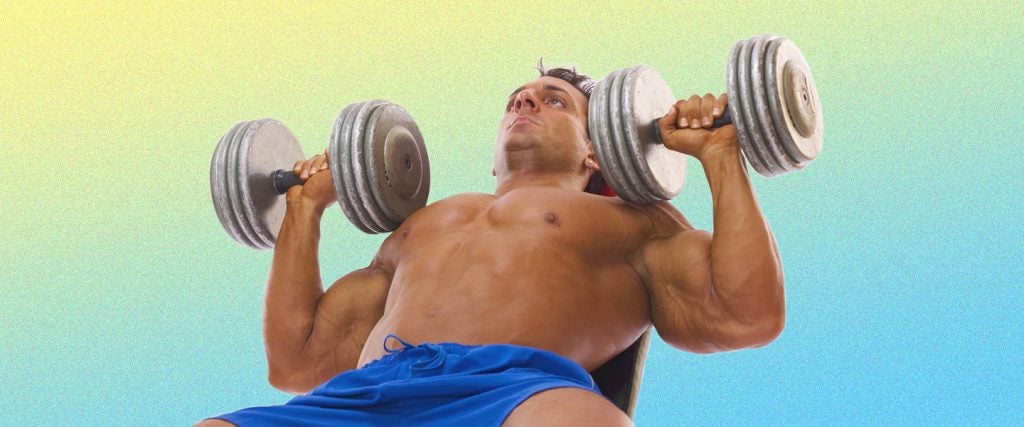The bench press is pretty much always king of the weight room, but it’s particularly the king of push day — i.e., any strength-training workout dedicated to your push muscles (namely, the triceps, anterior deltoids, medial deltoids, and of course, the chest). In fact, any effective push day is ordinarily going to begin with the bench press, since it will work the greatest number of muscle groups — along with the largest muscles of the day’s routine — all at the same time.
But what if I want to — gasp! — skip the bench on push day. What are some other pushing movements I can do?
It’s definitely not cheating to add any of the many variations of the chest press to push day. Whether you’re executing them from a classic chest-press machine, a cable-pulley system or a Hammer Strength machine, all of them enable effective pushing movements for the pectorals.
You can also try adaptations of shoulder presses, like the strict press, or any of the many versions of the military press. No matter what the configuration of the weight is — whether it’s all on one barbell or separated into dumbbells — as long as you don’t lean backwards, the focus of the pushing movement will place tremendous tension on your shoulders.
In terms of bodyweight pressing exercises, the push-up is usually the first thing that people think of — and with good reason. The push-up enables you to alter your hand position to shift your emphasis from your chest to your triceps, as well as to vary the elevation of your feet to adjust the placement of the resistance up or down your chest.
Whenever you become strong enough to fully support your own bodyweight, you can start doing dips on a set of parallel bars. For many, there is no better exercise for building and shaping the muscle fibers of the lower chest while putting a major emphasis on the triceps. There is another variation of dips that focuses more directly on the triceps called a bench dip, but be forewarned: It can put an undue amount of strain onto the shoulder, and at an awkward angle. There are machine adaptations of the dip, too, where you take a seat and drive parallel handlebars toward the floor as opposed to pushing yourself away from it.
Now, if you’re extremely powerful, you can give handstand push-ups a shot. Even if you cheat by performing them against a wall — which will most likely be the case since going support-free requires strength, balance and body control of an elite caliber — handstand push-ups are a tremendous shoulder developer that will give you cannonball delts.
Those all seem pretty basic. Don’t you have anything else?
Oh, always.
If you want another bodyweight exercise to do from the floor, a favorite of mine are the Hindu push-ups that legendary wrestler The Great Gama made famous. This push-up variation involves a jackknifing motion where you begin with your butt elevated in the air, swoop down and complete the pressing motion primarily with your triceps.
Along these lines, there are dozens of other push-up variations you can make use of depending upon your strength and ability level — from various plyo push-ups that require you to launch yourself off the ground, to archer and Spider-Man push-ups that necessitate greater muscle involvement to control the ascent and descent of your body far more carefully.
If your gym happens to have a landmine option — which was developed by my buddy Bert Sorin — you can do landmine presses. They were originally designed to help Bert gain strength in the exact areas he required to loft a shot put, and it’s also an amazing exercise for the upper pectorals. Or if you prefer to gain pushing power in a static position, you can post yourself against a wall and practice pushing against it, or pressing against other inanimate objects.
None of this means that you have to ditch the bench completely, just that you have enough other options available that you can confidently push it aside on push day if you’d like to give it a bit of a break.

